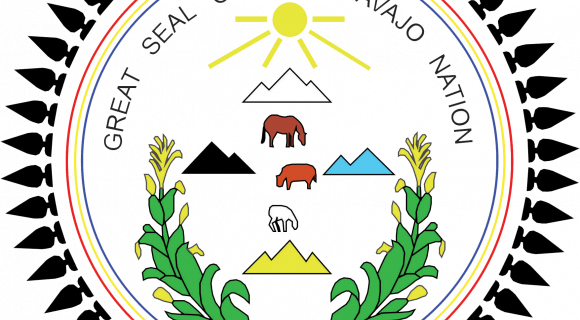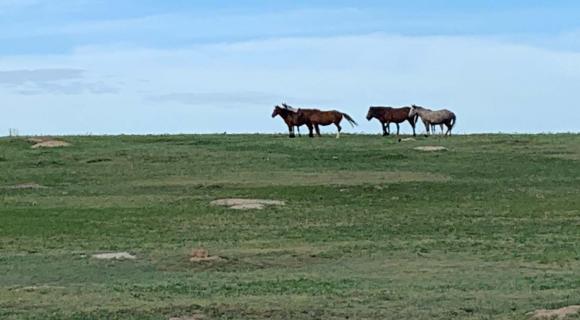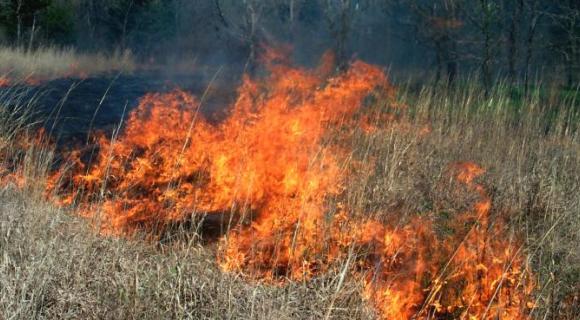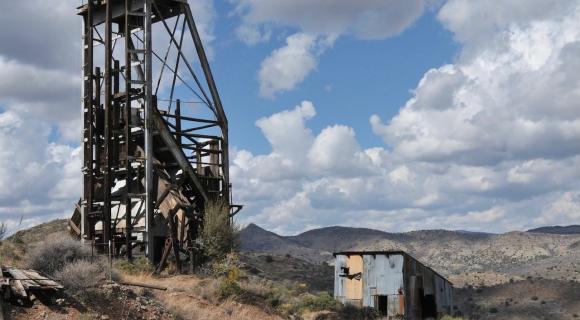- Body
Rangelands are important to American Indian and Alaskan Natives with an estimated 46 million acres of rangeland managed by tribes. These landscapes have agricultural, natural resource, and cultural significance. Many unique issues also come up with these indigenous rangelands including conservation of sacred areas, land tenure rights, variation of land title with unique responsibilities and authorities, and cultural uses. Many of these lands occur in the western United States and are a critical resource for indigenous livelihoods and culture but have been neglected with many contemporary issues and legal cases emerging.
Although Indian lands are extensions of neighboring ecological landscapes and watersheds, they are strikingly different politically. Many reservations have several different classes of land title within them that are not managed by a single political entity: Indian title, allotted, federal, and fee simple are examples. Each class of land gives rise to unique responsibilities and authorities. This can make land-based natural resource issues and resulting decisions quite complex. There are several land-related issues of key interest to American Indians and Alaska Natives today including: (1) sovereignty (2) undivided heirship and fractionated lands; and (3) the conversion of in held fee simple lands to trust lands ("fee to trust").
Featured Resources From the Database
- Technical Report
"Stewarding the land is an important part of ranching. Native American ranchers work with natural elements from the land, building and sustaining healthy communities, and sharing…
Additional Links
- Maps of United States Indians by State - Click on each state for a tribal map and listing of Native American tribes that have lived here.
- Native Land - Map tool and resource. Native Land Digital strives to create and foster conversations about the history of colonialism, Indigenous ways of knowing, and settler-Indigenous relations, through educational resources such as our map and Territory Acknowledgement Guide.
- Native American Rangelands Partnership - Offers free online rangeland ecology resources for Tribal staff, faculty, and liaisons. Reference materials, how-to manuals, and other support that tribal staff and members may use for range management of tribal lands. Outreach toolkits including videos, print material, and other rangeland resources that tribal staff may use for community outreach.
- Native American Range Advisory Committee (NARAC) - SRM's NARAC mission is to serve as a facilitator to provide necessary stakeholders with a healthy environment to develop new approaches that are appropriate for Native American culture, social issues, traditional uses of plants and wildlife, and land tenure patterns, while meeting regulatory (tribal and federal) standards.
- Indian Lands Tenure Foundation - Serving American Indian nations and people in the
recovery and control of their rightful homelands. - Indian Lands Tenure Foundation Land Issues - As European settlers moved westward, Native nations ceded vast territories to the United States government in exchange for guarantees of much smaller but secure reservations. Unfortunately, the federal government very quickly reneged on its obligations. Beginning in the 1880s, the U.S. enacted legislation that resulted in Native Americans losing ownership and control of two thirds of their reservation lands. The loss totaled 90 million acres – about the size of Montana. The results have been devastating, as generations of Native Americans have been robbed of their economic, cultural and human potential.
- Indian Lands Tenure Foundation Land Management - February 8, 2012 marked the 125-year anniversary of the 1887 General Allotment Act (or Dawes Act), legislation that was designed to assimilate American Indian people into white culture and was directly responsible for the loss of 90 million acres of Indian land. The Act required tribally-held land to be divided among individual tribal members and the remaining “surplus” lands opened to white settlement. This division and alienation of Indian land and assets had devastating consequences for Indian people that still endure today. These are some of the ongoing issues.
- Native American Agricultural and Food Laws - The purpose of this project was to create a create a “reading room” on Native American Agricultural and Food law and policy issues that provide users with a resource that brought all of the existing resources currently available together into one location. The reading room covers a variety of topics such as leasing issues related to Native American land, government food programs, enforcement of environmental rules and regulations on tribal lands, historic and cultural preservation, and numerous other topics.



